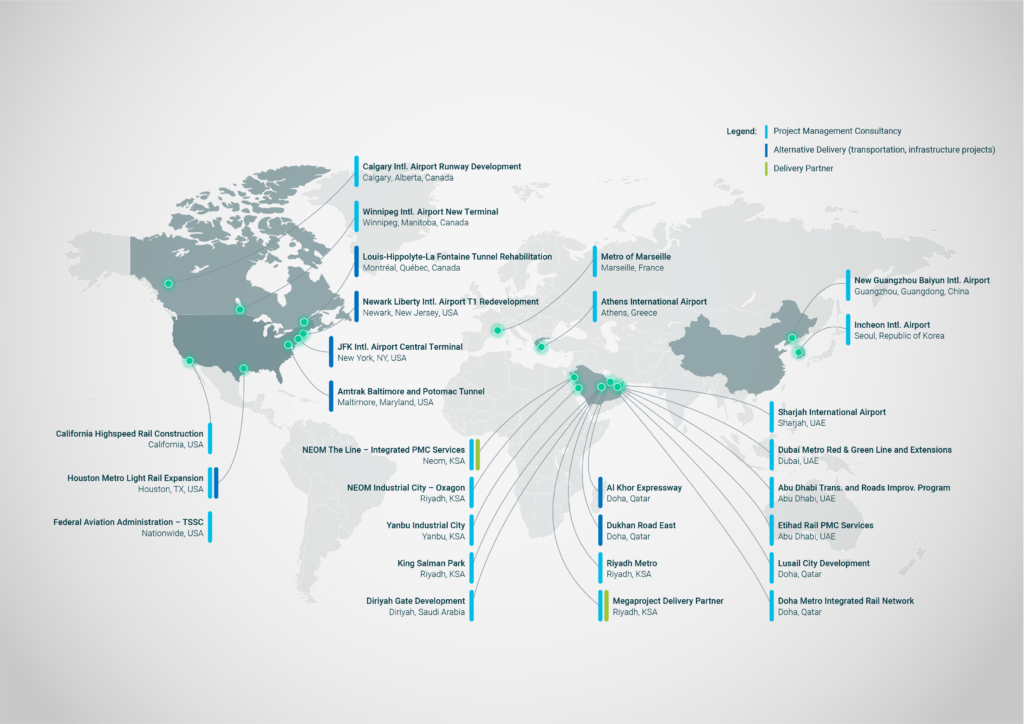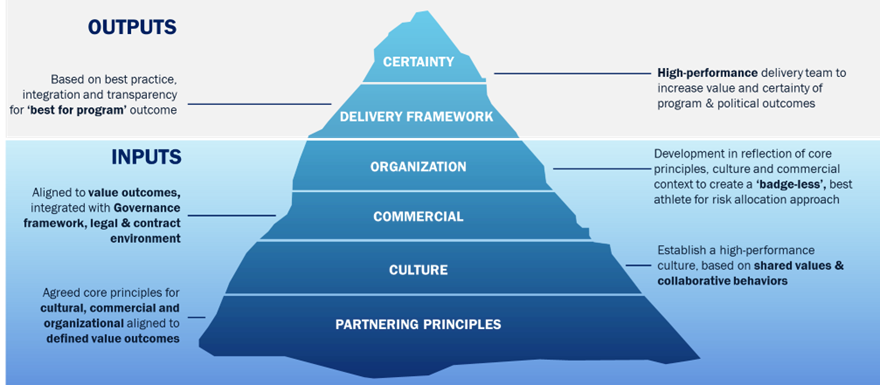
With an ever-increasing global investment in infrastructure, clients are looking to maximize the value of returns on their project pipelines. This is true in all regions and sub-sectors, where increased project and program size, and complexity of requirements have outstripped the development of traditional contract forms and delivery approaches that have been employed since the end of the last century. The evolution of various forms of Program Delivery Partner (PDP) agreements is an ongoing development by market leaders in program management to meet evolving client needs.
Evolution, Value And Applicability
Over the last 30 years, capital work programs have seen a great expansion in their content, requirements, and systems complexity. While contract forms have tried to keep pace with the emergence of various Project Management Consultancy (PMC) formats and associated alternative delivery contracts (Figure 1), this evolution has lagged client requirements, with only select market leaders adopting the latest innovative models. Consequently, the PDP approach for major programs has evolved to address the problems in these previous approaches where the focus was on the technical solutions — often in highly siloed arrangements — with limited early engagement of key stakeholders, leading to systematic delays, consequential time and cost impacts, and often resulting in dispute resolution in one form or another.

The value of outcomes required by the client is absolutely central to the PDP approach. This value may be time or cost related, however, cost must be considered in terms of the whole lifecycle impact. Similarly, a singular focus on time and cost without emphasis on quality can result in delayed openings and lost revenue streams. Furthermore, clients increasingly have more sophisticated and specialized requirements and outcomes, such as enabling a wider public agenda or optimizing their national circular economy, with specified reinvestment within local and/or national companies and human resources. The first focus of any emerging PDP approach must be to fully understand these complex outcomes to build in value in an appropriate and proportionate way.
The PDP approach is best applied to major work programs that exhibit one or more of the following key criteria. The more, the better, in terms of maximizing the value of outcomes:
- High financial value
- Long duration
- Complexity
- High-risk profile
- Key non-negotiable milestones
- Specialized requirements
Each of these program criteria potentially result in consequential impacts in the program, often in the most challenging delivery environments with multi-staged requirements over a protracted period. Programs that do not meet these criteria may be better served by more standard delivery models that are proportional to their size and complexity. However, a highly mature client with an integrated enterprise may opt for a PDP approach for all multi-program partner contracts.
Trust, Transparency And Collaboration
These are terms often used in modern business vernacular and are essential in the program management environment for effective and efficient implementation of the PDP approach. Concerted and sustained effort by all involved parties forms the foundation to an enterprise approach for the ‘whole’ arrangement, rather than just viewed as the client enterprise. A collaborative approach to establishing these core partnering principles that are built around the value outcomes of the client is at the core of the PDP model, and cascade into key sub-areas of focus, and must align as much as possible for best program outcomes.
Partner principles beyond trust, transparency and collaboration need to be developed, defined, and upheld to establish a shared culture, an aligned and incentivized commercial model and an optimized organizational structure that is cognizant of and sympathetic to these principles. Alignment of all components must be a priority for any PDP approach, as antagonistic arrangements will drive behaviors that are counter to the intent of wider commitments and will often default to traditional adversarial contract behaviors (Figure 2).

The Net Result
The outputs expected from a focused approach to a PDP manifest as a bespoke delivery framework with associated high-performance delivery teams. The net result is to increase the value of outcomes, the most critical being the certainty of major political and financial investments. This approach is founded on the partnering principles outlined, but must be tested, optimized, and integrated with the existing constraints of the delivery environment, most importantly the surrounding governance arrangements, the available contract forms, and the consenting arrangements. These added conditions can have a profound impact on delivery effectiveness and efficiency and must be factored into the arrangements, preferably during the initial stages when establishing the partnering principles, but at a minimum within the delivery framework establishment.
Ultimately, the level of acceptance and integration of the PDP approach will define the level of success in achieving the outcomes.
It is equally important to emphasize all PDP approaches are on a spectrum of engagements; from a simple collaboration to maximize the cultural and organizational benefits, to a fully integrated, enterprise platform approach that will gain maximum beneficial impacts across all areas of delivery. The beauty of the approach is that it can be tailored to the exact structure and requirements of clients by mutual agreement on the required commitment of inputs and the expected benefits of the outputs.